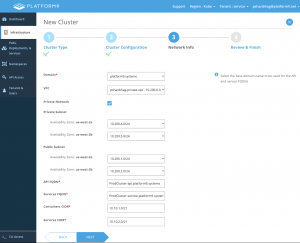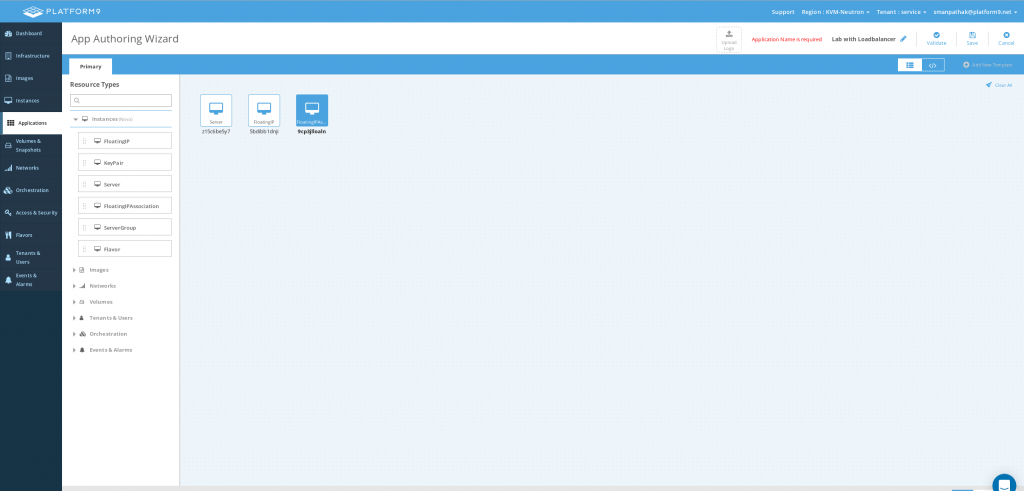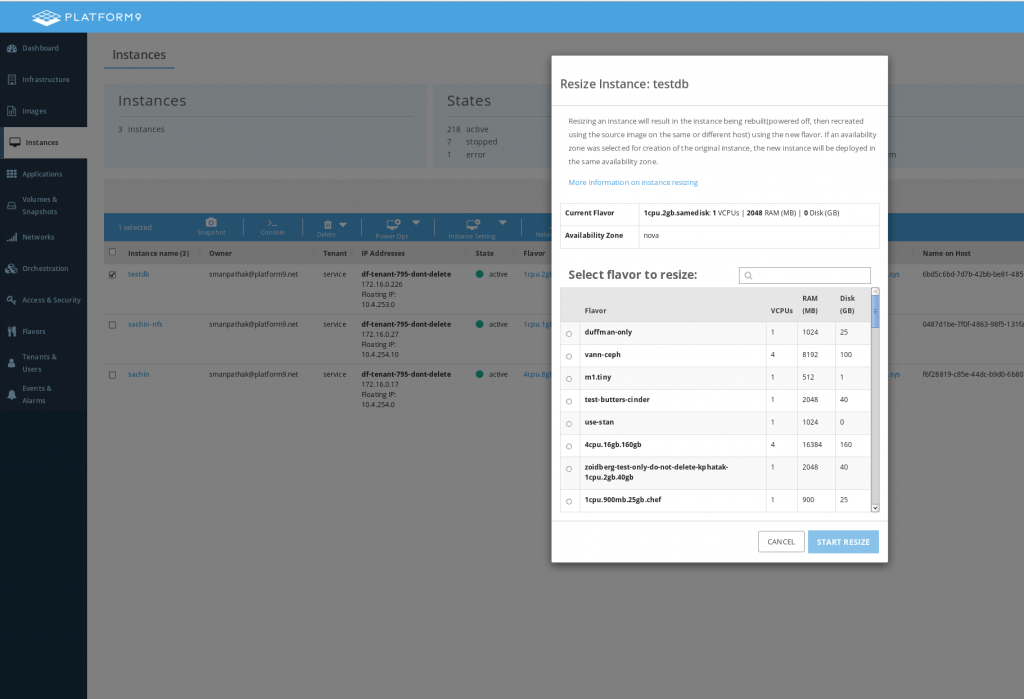Platform9 2.6 release notes
Platform9 Managed Kubernetes:
1. Improved authentication framework
In this release, we are introducing a Keystone authentication webhook which leverages Kubernetes Authentication webhook model. This feature should significantly improve the Kubernetes API performance. In our internal tests, we have seen improvements of 10x magnitude when compared to the previous version. We hope these improvements will make your product experience better.
2. Kubernetes clusters are now scoped to tenants
Kubernetes clusters are now scoped to the tenants under which they are created. In 1.0, users with a role in a Keystone tenant were authorized to use a namespace in one or more clusters. Customers found that the tenant-namespace mapping conflicted with some important use cases, like deploying Helm Charts. We are enabling these use cases in 1.1 by associating every cluster with a Keystone tenant, and ensuring that all users with a role in the tenant are authorized to use the cluster, not just a namespace in the cluster.
Note that previously downloaded kubeconfig files don’t work after this upgrade. Users will need to download a new kubeconfig from the Platform9 UI.
3. AWS based clusters can be deployed on specific subnets
When auto-deploying AWS clusters, users now have the option to select which networks they want to deploy their clusters on. Users also have the option to deploy to private subnets in AWS. You can read more about how to setup your cluster on private networks here.

3. Bug fixes and product improvements
This release also contains a number of performance optimizations and bug-fixes that should result in a better user experience for your Platform9 cloud platform! In particular, cluster deployments will not automatically setup the Service Load Balancer on the nodes. This should allow users to opt to setup Ingress Controllers or Service Load Balancers based on their preference. Reach out to Platform9 if you need assistance around this.
Note that to support new features in this release, the IAM policies associated with AWS cloud providers’ account needs to be updated. You can find the new policy file in this support article.
Known Issues:
- An AWS private network on which a cluster is deployed cannot be used to deploy another Kubernetes cluster. This is a known Kubernetes limitation(https://github.com/kubernetes/kubernetes/issues/35052).
- There are limitations when using AWS Route 53 private hosted zones with your AWS clusters:
- Private hosted zones are supported only when deploying into an existing VPC that has been associated with the hosted zone. Before using a private hosted zone, create a VPC and associate it with the hosted zone.
- Because the hosted zone is private, the API and Service FQDNs can only be resolved from within the associated VPC.
Platform9 Managed OpenStack:
1. Upgrade to Newton Release
This release upgrades core components of Platform9 Managed OpenStack to Newton release. This includes Keystone, Glance, Nova, Neutron and Cinder projects. Newton release of OpenStack brings in a host of critical bug fixes and features. Reach out to Platform9 if you would like to try out a particular feature.
2. Drag and Drop UI for Application Authors
Platform9 now simplifies application authoring. A simple drag and drop UI can be used to compose Murano applications. Using the advanced mode, the application template can be edited directly with Platform9 UI as needed.

3. Support for Resizing Instances
This release adds UI support for resizing instances created with OpenStack. Applicable flavor sizes are filtered out to make the process easy. By choosing appropriate flavor, users can change CPU cores, RAM and disk available to their instances.
